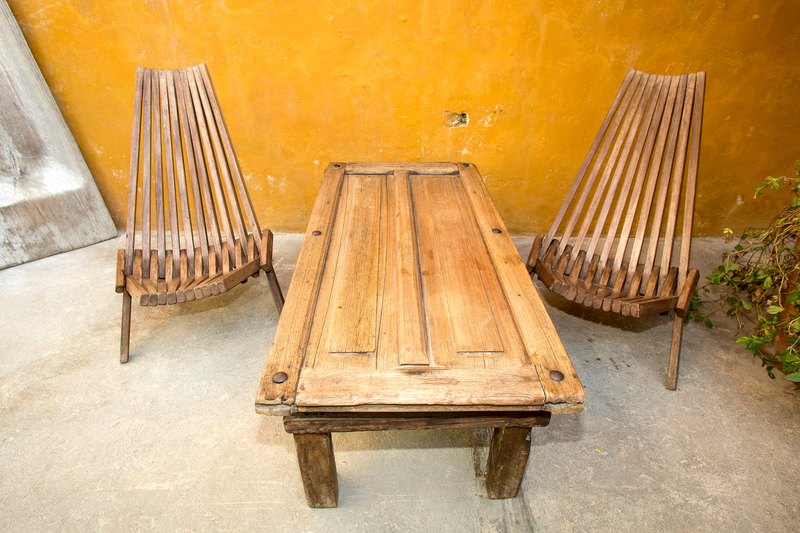When to Sell, Donate, or Toss Your Old Large Furniture: The Complete Guide
Deciding the fate of your old large furniture can seem daunting. Should you sell that worn but sturdy sofa, donate your dated dining table, or finally toss that battered old armchair? Making the right choice helps your wallet, the environment, and perhaps even someone in need! This guide delves into the best practices for responsibly managing large furniture you no longer use.

Understanding the Lifecycle of Large Furniture
Large furniture such as couches, dining sets, beds, and entertainment units are substantial investments and play a central role in any living space. Over time, however, even the most treasured pieces will reach a point where you must decide how to part ways with them. Whether you're redecorating, moving, or simply decluttering, knowing when to sell, donate, or toss your old large furniture is essential for a smooth and eco-friendly transition.
- Furniture selling can help you recoup costs and connect your item with someone who might love it as much as you did.
- Furniture donation supports local charities and those in need, and may offer you a tax deduction.
- Furniture disposal or recycling might be the only route for items beyond repair or reuse.
Factors to Consider Before You Decide
Before making a decision, ask yourself the following questions:
- What is the condition of the furniture?
- Is the item in demand?
- How quickly do you need it gone?
- Are there charitable organizations nearby?
- Does your municipality offer bulk item pick-up or recycling?
Your answers will guide you on whether to sell, donate, or toss your old large furniture for optimal impact.
When to Sell Your Old Large Furniture
Assessing Sale Potential
Most people hope to sell their large furniture to offset the cost of new purchases. Consider a sale when:
- The piece is in good or excellent condition. No major damage, stains, or odors. A sturdy frame and clean upholstery are crucial.
- The style is current or classic. Neutral colors, modern lines, or timeless quality pieces have higher resale value.
- The brand is well-known. Designer or reputable brands can fetch higher prices in secondhand markets.
Best Places to Sell Used Large Furniture
- Online Marketplaces: Craigslist, Facebook Marketplace, OfferUp, and eBay are popular platforms for large furniture sales. Quality photos and honest descriptions are vital for success.
- Consignment Stores: Local consignment shops often accept high-quality or antique furnishings, handling sales for a percentage of the final price.
- Garage Sales: If you have multiple items, a garage sale can attract bargain hunters looking for large pieces.
Tips for Selling Large Furniture Effectively
- Clean and repair the item. A clean, fresh-smelling, and repaired piece fetches a better price.
- Provide dimensions. Buyers need to know if the item fits their space.
- Be honest about flaws. Highlight damage or wear in your listing for transparency.
- Offer delivery or help with transport. This can be a dealmaker for someone without a large enough vehicle.
When to Donate Your Old Large Furniture
Key Reasons to Donate
- Your item is gently used but not suited for resale. Maybe it's outdated or too big for modern homes, but still functional and clean.
- You want to give back to the community. Donations support families, shelters, schools, or non-profits in need.
- You need to remove the item quickly. Many charities offer free pickup services for bulky items, making donation easy and convenient.
- Potential for tax benefits. Donations to registered charities are tax-deductible; keep your receipts for tax season.
Where to Donate Large Furniture
- National Charities: Goodwill, Salvation Army, Habitat for Humanity ReStore, Furniture Bank Network
- Local non-profits: Homeless shelters, women's shelters, churches, or schools may welcome furniture donations.
- Online gifting: Websites like Freecycle and Nextdoor help you pass items directly to local individuals in need.
Donation Guidelines
- Check for restrictions. Some charities refuse items with tears, stains, pet hair, or broken parts.
- Arrange for clean and accessible pickup. Clear pathways and vacuum or wipe down items.
- Get documentation. Always request a donation receipt for tax purposes.
Donating old large furniture not only keeps it out of landfills but potentially changes someone's life for the better.
When to Toss or Recycle Large Furniture
When Tossing Is Your Best Option
- The item is irreparably damaged. Severe water damage, mold, infestations, or broken frames make furniture unsafe or unsanitary.
- It lacks resale or donation appeal. Outdated, heavily soiled, or excessively worn pieces may be turned away by buyers and charities alike.
- All repair options are exhausted. Sometimes, the cost or effort to repair outweighs the furniture's value.
Eco-Friendly Furniture Disposal Methods
Tossing doesn't always mean environmentally harmful dumping. Consider these alternatives:
- Municipal bulk pickup: Many waste services offer scheduled collection of large items. Check your city's website for guidelines and schedules.
- Furniture recycling centers: Some centers dismantle furniture to recycle wood, metal, and fabrics. This minimizes landfill waste.
- Junk removal services: Private companies often sort out reusable parts or donate salvageable items before disposal.
- Creative repurposing: Parts of old furniture (wood panels, drawers, cushions) can be upcycled into new projects or donated to local makerspaces.
How to Prepare Large Furniture for Selling, Donating, or Tossing
Cleaning and Disassembling
- Vacuum and disinfect fabrics and cushions. Remove crumbs, hair, and stains to improve appeal and hygiene.
- Repair minor issues. Tighten screws, touch up scratches, or replace missing hardware where feasible.
- Disassemble bulky items. Tables, bed frames, and shelving units are often easier to move (and dispose of) when broken down.
Safety and Accessibility
- Clear a path to the door. Make moving large pieces easy by clearing furniture and obstacles from hallways.
- Protect floors and walls. Place blankets or sliders beneath heavy furniture to prevent scratches.
- Inform buyers, volunteers, or removal personnel in advance. Provide dimensions and any challenges (like stairs).
Benefits of Responsible Furniture Removal
Environmental Impact
- Less landfill waste. Selling and donating extend a furniture item's lifespan and reduce needless dumping.
- Resource conservation. Recycling or repurposing furniture saves raw materials and energy.
Social and Financial Benefits
- Helps others in need. Your once-loved items can become someone else's comfort or necessity.
- Tax deductions. Donation receipts may lower your taxable income.
- Extra cash from selling. Use proceeds to fund newer purchases or save for a rainy day.

Common Mistakes in Disposing of Old Large Furniture
- Abandoning furniture curbside without permission. Many cities fine homeowners for illegal dumping.
- Failing to research disposal regulations. Check city or county rules before tossing oversized items.
- Donating unusable or unsafe items. Charities spend resources disposing of unwanted items, which dilutes the impact of your donation.
- Overlooking recycling options. Many materials (like metal, wood, or foam) are recyclable with the right facility.
Summary: Making the Best Choice for Your Old Large Furniture
When deciding where your old large furniture should go, think responsibly and creatively. If a piece still has life left, selling or donating maximizes its utility and minimizes waste. However, if something is too worn or hazardous, prioritize safe and eco-friendly disposal or recycling. Whether you are upgrading, moving, or decluttering, these informed choices benefit your community, wallet, and the planet.
- Sell when your furniture is in great condition and has market demand.
- Donate if it's clean, sturdy, but not lucrative to sell.
- Toss or recycle when no other options remain, and choose the most environmentally sound method possible.
By understanding when to sell, donate, or toss your old large furniture, you take a crucial step towards sustainable living and responsible home management.
Frequently Asked Questions (FAQ) About Disposing of Large Furniture
- Can I leave old furniture on the curb?
Check your municipality rules first. Many cities schedule special bulk pickup days and require you to arrange service in advance. Never leave items on the curb without instructions. - What if my item is only lightly damaged?
Light wear and tear can often be cleaned or fixed. Items with minor damage may still be accepted by buyers or charities. Be honest about the item's condition in any listing or donation. - Are there fees for recycling large furniture?
Some recycling centers charge by weight or type of material, while others may offer free drop-off days. Research local options for the best deal. - Do I need to disassemble furniture before pickup or donation?
It depends on the charity or service. Check guidelines and, if possible, disassemble to make moving safer and easier.
Ultimately, responsibly managing your old large furniture ensures a cleaner environment, a happier community, and more room for you to live your best life!